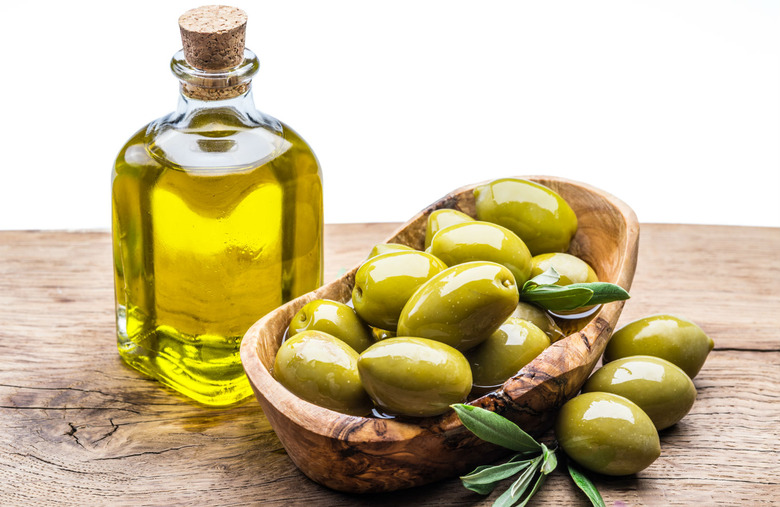How Extra Virgin Olive Oil Is Made
Olive oil is one of the healthiest and delicious oils around. It's at the core of the Mediterranean diet, and it's been produced for thousands of years. But here's a question for you: How is it made? Do people just squeeze the olives and oil comes out? If not, where does the oil come from?
In order to make olive oil, fresh-picked olives are ground into a slurry, traditionally by using millstones. (Modern factories utilize a more gentle process to prevent friction from elevating the slurry to above 80 degrees F; if kept below this threshold it can earn the coveted title of "cold-pressed."). Once finely ground, the paste is layered between dozens of round woven hemp mats; a hydraulic press then puts pressure onto these mats, which squeezes the oil out of the pulp and into an awaiting container below. Some modern factories use a high-powered centrifuge instead of mats for this process, but the end result is the same: The oil is squeezed out of the pulp.
This pure, unfiltered oil is, obviously, the most valuable type of olive oil there is; this oil is usually filtered and bottled in green glass (to filter out harmful UV rays) before making its way to the supermarket and being sold as extra virgin olive oil. If the oil doesn't meet the exacting specifications to be called extra virgin, it's refined until it's lighter and nearly flavorless and then mixed with a small amount of the good stuff and labeled simply "olive oil." You can find plenty of more interesting facts about this super-healthy oil here.
